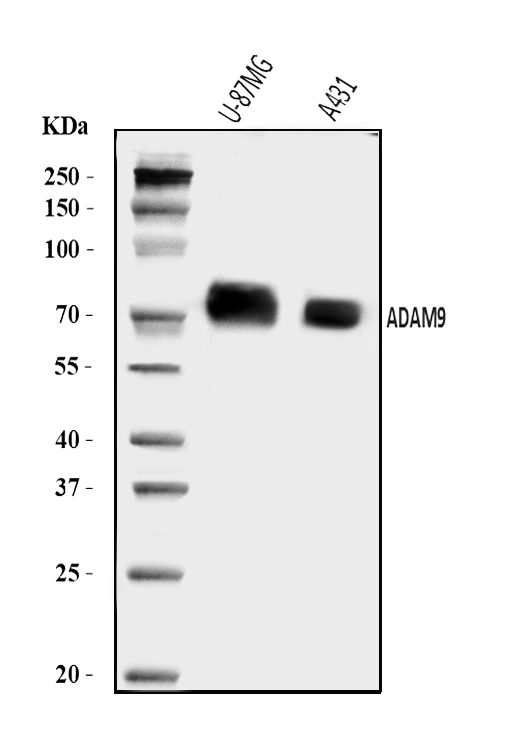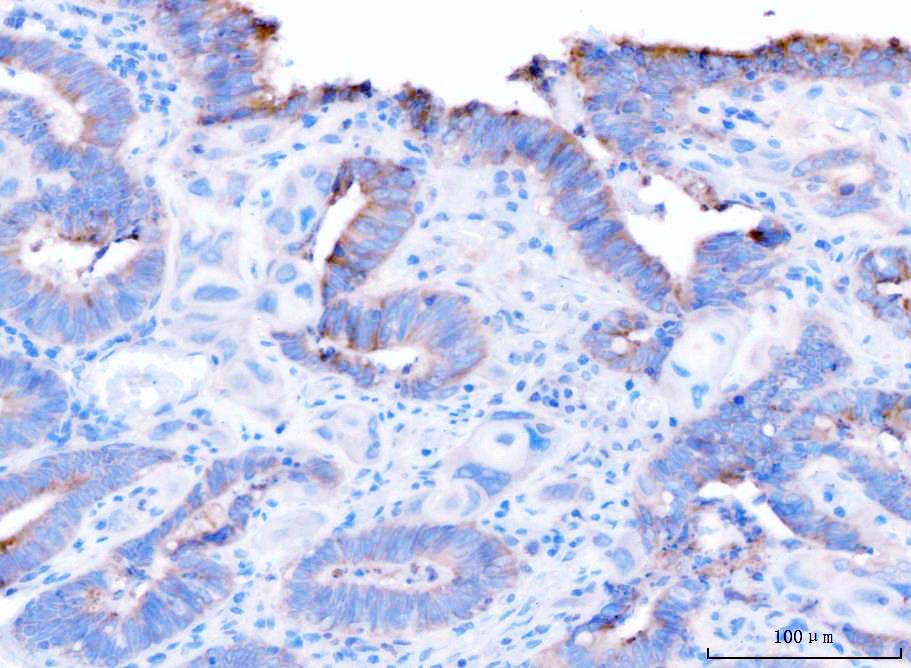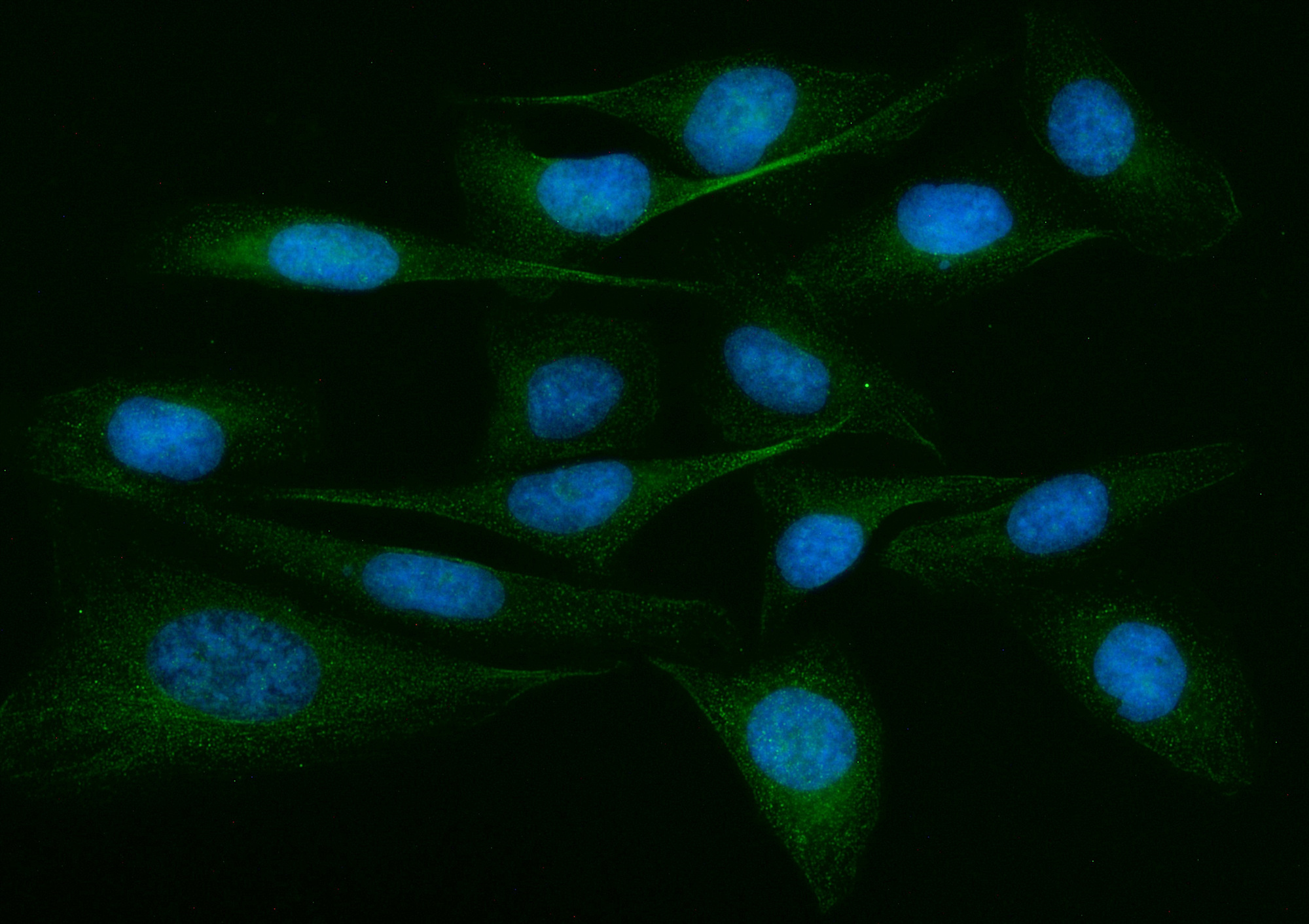| Western blot (WB): | 1:500-2000 |
| Immunohistochemistry (IHC): | 1:50-400 |
| Immunocytochemistry/Immunofluorescence (ICC/IF): | 1:50-400 |
| Enzyme linked immunosorbent assay (ELISA): | 1:100-1000 |
| (Boiling the paraffin sections in 10mM citrate buffer,pH6.0,or PH8.0 EDTA repair liquid for 20 mins is required for the staining of formalin/paraffin sections.) Optimal working dilutions must be determined by end user. | |

Western blot analysis of ADAM9 using anti-ADAM9 antibody (A03074-1). The sample well of each lane was loaded with 30 ug of sample under reducing conditions.
Lane 1: U-87MG whole cell lysates,
Lane 2: A431 whole cell lysates.
After electrophoresis, proteins were transferred to a membrane. Then the membrane was incubated with rabbit anti-ADAM9 antigen affinity purified polyclonal antibody (A03074-1) at a dilution of 1:1000 and probed with a goat anti-rabbit IgG-HRP secondary antibody (Catalog # BA1054). The signal is developed using ECL Plus Western Blotting Substrate (Catalog # AR1197). A specific band was detected for ADAM9 at approximately 75 kDa/100 kDa. The expected band size for ADAM9 is at 91 kDa.

IHC analysis of ADAM9 using anti-ADAM9 antibody (A03074-1).
ADAM9 was detected in a paraffin-embedded section of human bladder adenosquamous carcinomahuman tissue. Biotinylated goat anti-rabbit IgG was used as secondary antibody. The tissue section was incubated with rabbit anti-ADAM9 Antibody (A03074-1) at a dilution of 1:200 and developed using Strepavidin-Biotin-Complex (SABC) (Catalog # SA1022) with DAB (Catalog # AR1027) as the chromogen.

IF analysis of ADAM9 using anti-ADAM9 antibody (A03074-1).
ADAM9 was detected in an immunocytochemical section of U2OS cells. The section was incubated with rabbit anti-ADAM9 Antibody (A03074-1) at a dilution of 1:100. DyLight®488 Conjugated Goat Anti-Rabbit IgG (Green) (Catalog # BA1127) was used as secondary antibody. The section was counterstained with DAPI (Catalog # AR1176) (Blue).

Western blot analysis of ADAM9 using anti-ADAM9 antibody (A03074-1). The sample well of each lane was loaded with 30 ug of sample under reducing conditions.
Lane 1: U-87MG whole cell lysates,
Lane 2: A431 whole cell lysates.
After electrophoresis, proteins were transferred to a membrane. Then the membrane was incubated with rabbit anti-ADAM9 antigen affinity purified polyclonal antibody (A03074-1) at a dilution of 1:1000 and probed with a goat anti-rabbit IgG-HRP secondary antibody (Catalog # BA1054). The signal is developed using ECL Plus Western Blotting Substrate (Catalog # AR1197). A specific band was detected for ADAM9 at approximately 75 kDa/100 kDa. The expected band size for ADAM9 is at 91 kDa.

IHC analysis of ADAM9 using anti-ADAM9 antibody (A03074-1).
ADAM9 was detected in a paraffin-embedded section of human bladder adenosquamous carcinomahuman tissue. Biotinylated goat anti-rabbit IgG was used as secondary antibody. The tissue section was incubated with rabbit anti-ADAM9 Antibody (A03074-1) at a dilution of 1:200 and developed using Strepavidin-Biotin-Complex (SABC) (Catalog # SA1022) with DAB (Catalog # AR1027) as the chromogen.

IF analysis of ADAM9 using anti-ADAM9 antibody (A03074-1).
ADAM9 was detected in an immunocytochemical section of U2OS cells. The section was incubated with rabbit anti-ADAM9 Antibody (A03074-1) at a dilution of 1:100. DyLight®488 Conjugated Goat Anti-Rabbit IgG (Green) (Catalog # BA1127) was used as secondary antibody. The section was counterstained with DAPI (Catalog # AR1176) (Blue).




